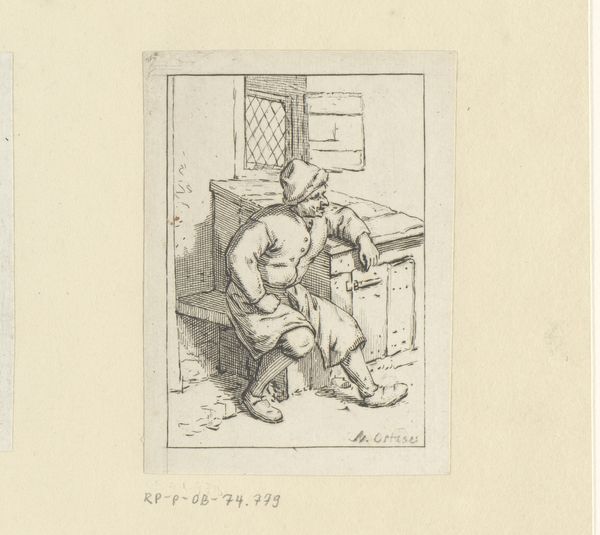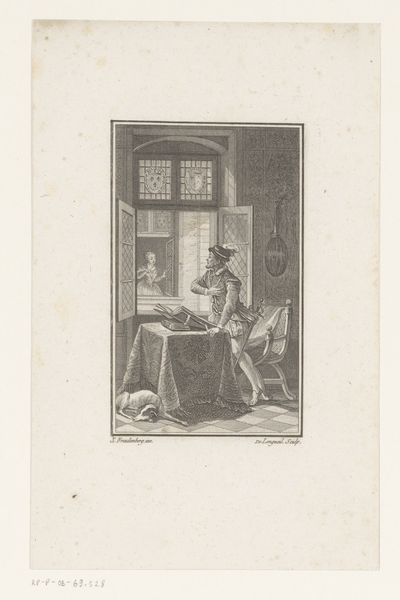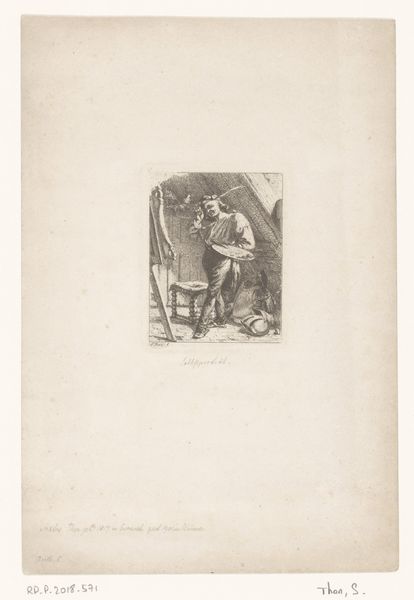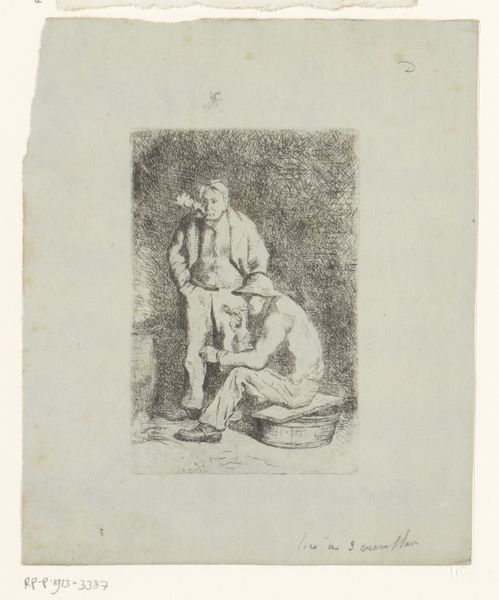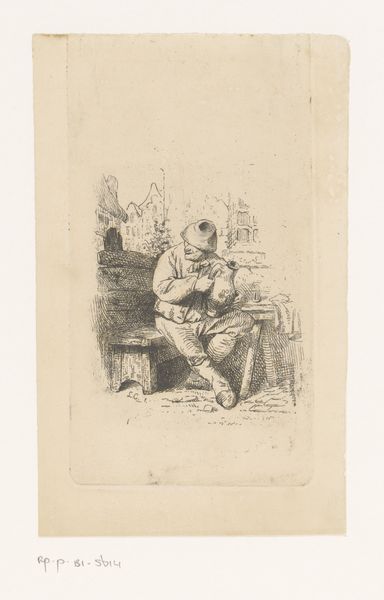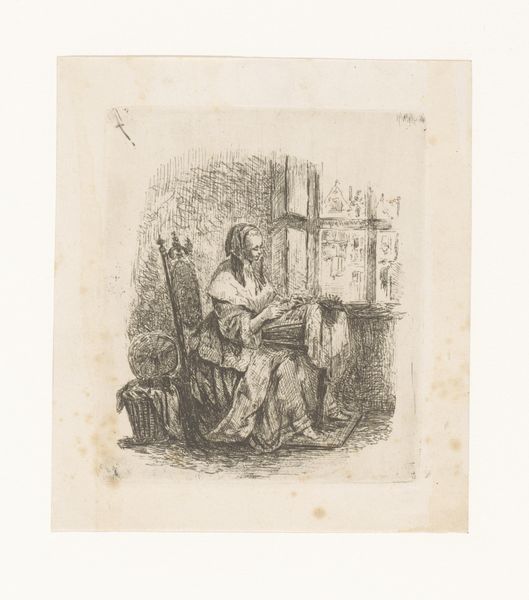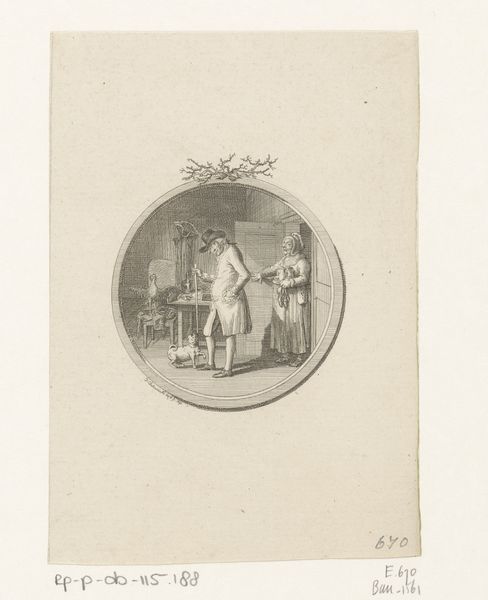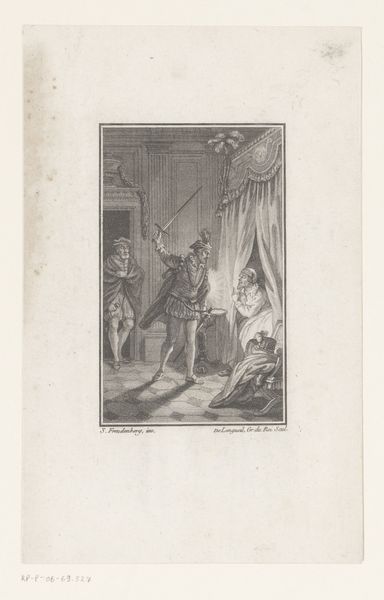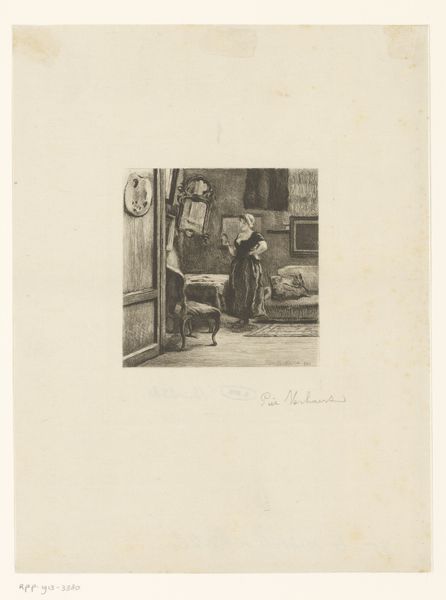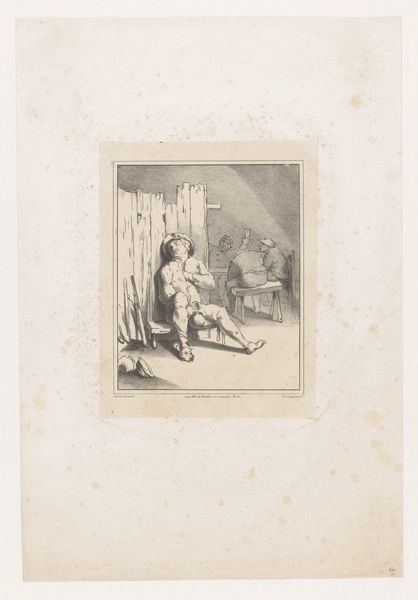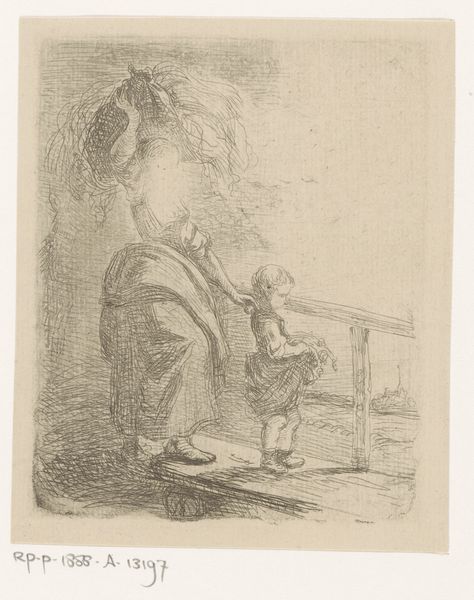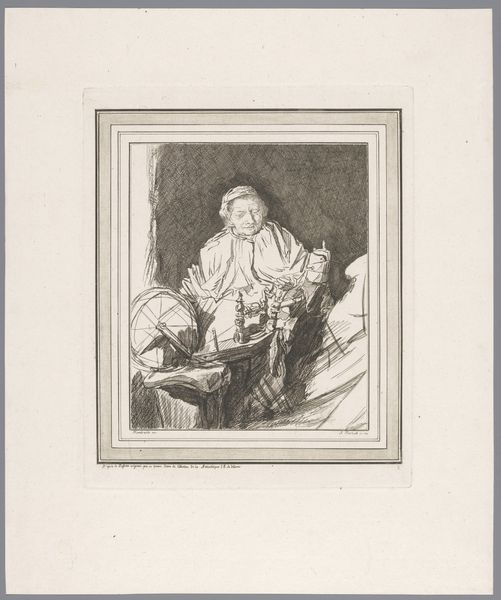
Dimensions: height 52 mm, width 47 mm
Copyright: Rijks Museum: Open Domain
This delicate etching by Johann Andreas Benjamin Nothnagel presents us with a scene of labour, featuring a shoemaker, his wife with a distaff, and another figure in the background. Note the distaff, a tool used in spinning, held aloft by the woman. It’s more than a mere instrument; it is an ancient symbol of feminine labour and domesticity. Consider its presence in classical depictions of the Fates, those goddesses who spin the thread of life. Here, too, the distaff suggests a weaving of destinies. The act of spinning—transforming raw material into thread—resonates with alchemical processes and the cyclical nature of time. Across cultures, spinning and weaving are imbued with notions of creation and transformation. The labour of the hands, the rhythmic turning of the wheel, speaks to a deep, subconscious desire to shape our world, to impose order upon chaos. The image touches a primal chord within us, a recognition of the enduring human impulse to create, to labour, and to find meaning in the mundane. It echoes through time, resurfacing in countless forms, each bearing the weight of collective memory.
Comments
No comments
Be the first to comment and join the conversation on the ultimate creative platform.
